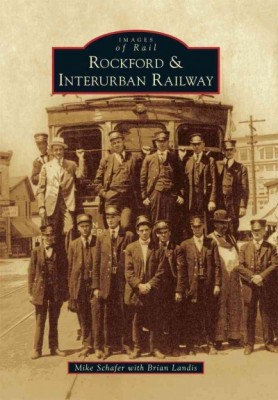| Rockford & Interurban Railway Contributor(s): Landis, Brian (Author) |
|
 |
ISBN: 1467112399 ISBN-13: 9781467112390 Publisher: Arcadia Publishing (SC) OUR PRICE: $22.49 Product Type: Paperback - Other Formats Published: March 2015 |
| Additional Information |
| BISAC Categories: - History | United States - State & Local - Midwest(ia,il,in,ks,mi,mn,mo,nd,ne,oh,sd,wi - Transportation | Railroads - History - Transportation | Railroads - Pictorial |
| Dewey: 625.6 |
| LCCN: 2014952754 |
| Series: Images of Rail |
| Physical Information: 0.26" H x 6.97" W x 9.09" (0.70 lbs) 128 pages |
| Descriptions, Reviews, Etc. |
| Publisher Description: With today's America dominated by the automobile, it is difficult to believe that until the 1920s nearly 100 percent of the US population traveled via rail. Conventional passenger-train service spread rapidly by the 1850s, but another form of rail transportation did not emerge until the turn of the 20th century: the interurban. Almost always electric, interurbans linked cities with burghs. Rockford, one of Illinois's three largest urban centers during the 20th century, enjoyed a system appropriately named the Rockford & Interurban, dating from the city's horse-drawn streetcars of the 1880s. By World War I, the Rockford & Interurban ran from downtown Rockford to Cherry Valley and Belvidere; Winnebago, Pecatonica, and Freeport; Roscoe and Rockton; and Beloit and Janesville, Wisconsin. The Rockford & Interurban enjoyed a supernova of success, rising quickly in popularity before slowly dying when the automobile became widespread in the 1920s; the Great Depression finished the job in 1936. |
Contributor Bio(s): Schafer, Mike: - Rockford native Mike Schafer is a transportation historian and photographer who has observed and documented the North American railroad scene. Machesney Park resident Brian Landis is an aficionado of northern Illinois/southern Wisconsin railroading. Both have been in search of early photographs of the R&I and, with the archives of the Chicago-based Shore Line Interurban Historical Society and local sources, present their story here. |